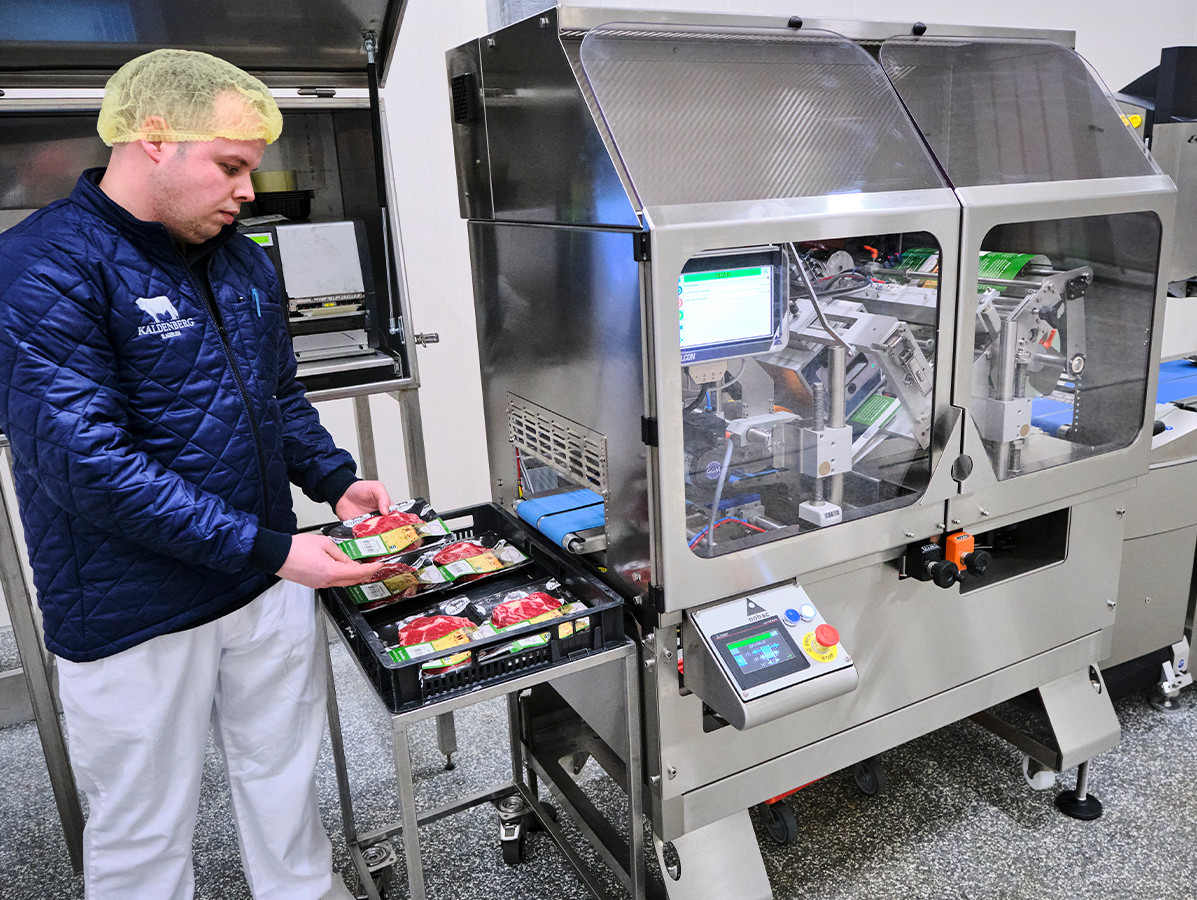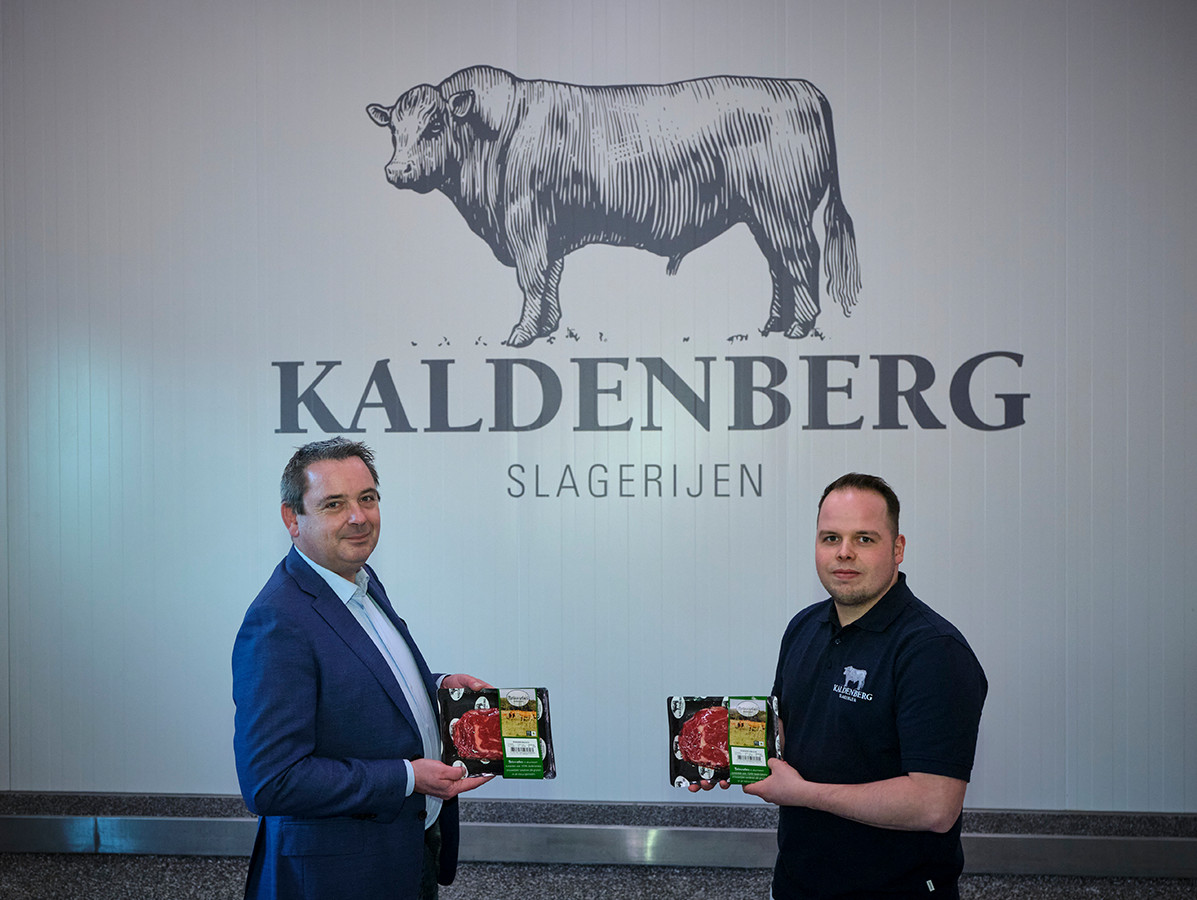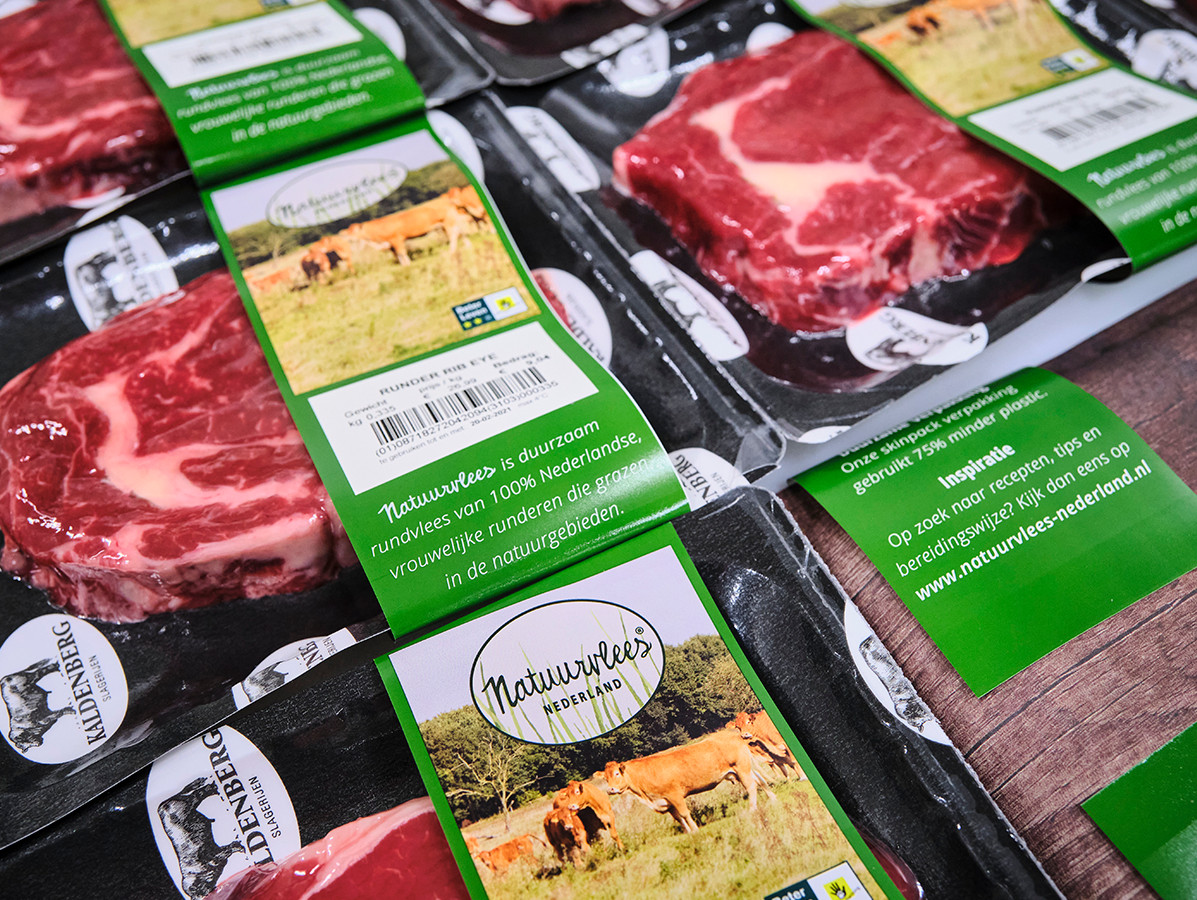
How do you package meat more sustainably? That is the challenge that Slagerijen Kaldenberg faced with its Natuurvlees (Natural Meat) concept. The result is a skin pack containing 75% less plastic, which is automatically packed, weighed, registered and provided with a label that varies in height per package.
If you, as a meat processing company, introduce a new concept Natuurvlees, with Beter Leven quality mark two stars, then a sustainable product presentation should go with it. "You can't use regular plastic packaging for meat that is tasty, sustainable and animal-friendly," says Dirk Kaldenberg. "Besides, the plastic soup is already big enough." At Slagerijen Kaldenberg in Vuren, they chose to provide the Natuurvlees with a skin pack. A plate of black cardboard that shows off the geometry of the meat, covered with a thin layer of recyclable plastic. And around it a label that tells the story. The process seems simple. However, this project required more effort.
Dirk Kaldenberg explains how the selection and realization process of the new packaging method went. "When we opted for a skin pack, we started looking for a machine that could transform paper into a kind of tray and then apply a skin foil to this tray. Working with paper is really different from working with plastic," Dirk emphasizes. "A plastic tray is dimensionally stable, while paper changes as a result of the moist environment and temperature. Because we keep an eye on market developments and visit trade fairs, we were able to find the right machine: the Multivac packaging machine. Then we had to decide how we wanted to organize the weighing, registration and labeling process. I contacted Mischa Schmitz from Espera Netherlands, our supplier of weighing and labeling equipment."

Mischa Schmitz (left) and Dirk Kaldenberg: Slagerijen Kaldenberg and Espera have been working together for about 16 years.
Slagerijen Kaldenberg and Espera have been working together for about 16 years. A trusted collaboration where both parties know eachother well. So did Dirk and Mischa. Together they discussed the options for a different way of labeling. In the end they opted for a linerless D-label all-round from Belona. This could be achieved with a combination of an Espera weighing and labeling machine ES7011, already in use at Kaldenberg, integrated with a Nobac 5000PP D-label machine. This Nobac machine was purchased and connected to the Espera machine. A new addition to Kaldenberg's machine park, but not a newly developed machine. Before purchasing the machine Mischa took Dirk to a relation who already works with this machine, to see the possibilities with their own eyes. After all, there was a challenge of paper with wood texture on the bottom and a black color on the top, no shape stability and the height variation of the hand-cut natural product. The Nobac 5000PP could handle this job, even after multiple tests. The control is carried out by the ERP system from ReflexSystems, the current weighing data of the packaged meat is sent back to the system.
From a 250 kg roll of paper, the packaging machine now makes trays, which are sealed with plastic after the meat is placed on them. The packages are then transported to the Espera ES 7011 for weighing and registration. The label is then printed with up-to-date data and applied with precision around the packaging. 'A piece of art', because for each package the machine creates a unique label that covers exactly the height of the piece of meat and contains the current information. A label that tells the story of Natuurvlees.

The process of making choices, selecting machines and testing took about nine months. Dirk proudly says that at Christmas the first real production was run and the Natuurvlees was presented in sustainable packaging in the 39 butcher shops in the Sligro branches. "'WOW!', the customers reacted." This was a reaction that they had hoped for, but had not expected in advance. Mischa explains: "People are not used to this presentation. It's not a tray of meat anymore, but an attractive meat product. It requires a different mindset." Dirk adds: "Like you will only find with more luxurious products in the supermarket."
Slagerijen Kaldenberg values its customers, so the company is taking cautious steps to include them in the story. Now that the initial rollout proved successful, the company is making future plans. "This concept is getting bigger. When the restaurant business reopens soon, the growth will be more rapid. Our Natuurvlees is an excellent product to put on the menu. Customers will ask for the story. When they eat meat, they want a good piece. With attention for people and animals. And less plastic waste."
Product development also continues. "We know we can handle this process. It simply went well," Dirk and Mischa conclude in unison.
www.kaldenberg.nl
www.espera.nl
Photos: ©Fotobureau Roel Dijkstra
Source: Vakblad Voedingsindustrie 2021